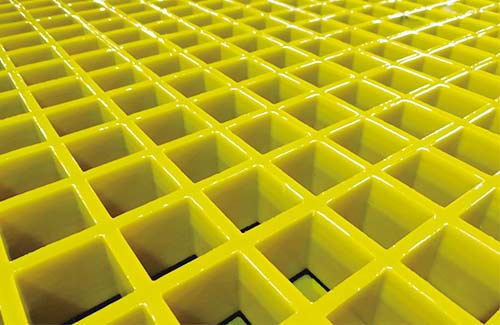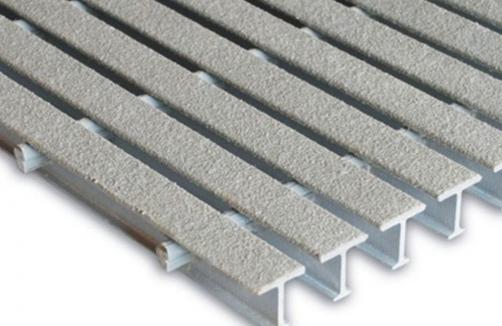GRPグレーチング:メリットと用途の総合ガイド
GRPグレーチングは、ガラス強化プラスチックグレーチングとしても知られ、幅広い産業用途に使用される汎用性と耐久性に優れた素材です。しかし、GRPグレーチングとは一体何なのでしょうか?この包括的なガイドでは、GRPグレーチングの利点と用途を探求し、一般的な質問に対処し、建設から製造まで幅広い業界に貴重な洞察を提供します。
GRPグレーチングとは?

GRPグレーチングは、ガラス繊維とポリマーマトリックス(通常はポリエステルまたはビニルエステル樹脂)から作られる複合材料である。ガラス繊維は高い強度と剛性を提供し、ポリマーマトリックスは優れた耐食性と耐久性を提供する。この組み合わせにより、GRPグレーチングは、鋼鉄やコンクリートのような従来の材料が腐食、重量、その他の要因で故障する可能性のある環境にとって理想的な選択肢となる。
GRPグレーチングを選ぶ理由
産業界がGRPグレーチングを選ぶ主な理由の一つは、その優れた耐久性だ。時間とともに錆びたり弱くなったりする鋼鉄とは異なり、GRPグレーチングは過酷な環境でも耐腐食性を維持します。さらに、GRPグレーチングはスチールよりかなり軽く、支持構造への負荷を軽減し、設置が容易になる。これらの利点は、GRPグレーチングを長期的に費用対効果の高いソリューションにします。
GRPグレーチングの利点
耐食性
GRPグレーチングの際立った特徴の一つは、厳しい環境下での腐食に耐える能力です。海水、化学物質の流出、工業汚染物質など、GRPグレーチングは影響を受けず、長期的な信頼性を確保します。そのため、海洋、化学処理、廃水処理施設に特に適しています。
軽量・高強度
GRPグレーチングは、強度対重量比が優れているため、従来の材料に比べて取り扱いや設置が容易です。また、軽量であるため、輸送や設置の際に構造物が損傷するリスクが低く、プロジェクト全体のコストをさらに削減することができます。
ローメンテナンス
GRPグレーチングのもう一つの重要な利点は、メンテナンスの必要性が低いことである。錆を防ぐために定期的な塗装やコーティングが必要なスチール製グレーチングとは異なり、GRPグレーチングは追加の処理を必要としません。そのため、メンテナンスにかかる時間と費用を節約でき、企業は他の重要な業務に集中することができる。
電気絶縁
GRPグレーチングは優れた絶縁体であるため、電気的安全が優先される用途に最適です。変電所や発電所など、接地と絶縁が不可欠な環境で使用できます。この特性は安全性を高めるだけでなく、電気的損傷から保護することで機器の寿命を延ばすことにもつながります。
GRPグレーチングの用途
産業用プラットフォームと歩道
GRPグレーチングは、その耐久性と安全性の特徴から、産業用プラットフォーム、歩道、中二階に一般的に使用されています。その滑り止めの表面と重い荷重に耐える能力は、忙しい産業環境に最適です。
海洋・水処理施設
海洋および水処理用途では、GRPグレーチングは耐食性に優れている。GRPグレーチングは、海水や化学薬品にさらされる港湾、埠頭、処理場でのアクセスプラットフォーム、歩道、グレーチングに使用されています。
化学処理プラント
化学処理プラントでは、さまざまな化学薬品に対する耐性のため、GRPグレーチングがよく使用される。酸、アルカリ、その他の腐食性物質への暴露に耐えることができ、プラントのさまざまなエリアへの安全で信頼性の高いアクセスを保証します。
変電所
GRPグレーチングは、変電所のプラットフォームや開閉装置のエンクロージャーなど、電気絶縁が重要な用途にも使用されている。その非導電性の特性は、短絡やその他の電気的危険を防ぐのに役立ちます。
よくある質問
GRPグレーチングは従来の材料より高価か?
GRPグレーチングの初期コストは、スチールやコンクリートより若干高いかもしれないが、その長期的な利点により、全体的なコストが低くなることが多い。GRPグレーチングの耐久性、低メンテナンス要件、長寿命により、多くの用途で費用対効果の高い選択肢となる。
GRPグレーチングはカスタマイズできますか?
はい、GRPグレーチングは、特定のプロジェクトの要件を満たすためにカスタマイズすることができます。さまざまなサイズ、形状、負荷容量で製造することができ、さまざまな産業ニーズのための汎用性の高いソリューションです。
GRPグレーチングの寿命は?
適切な設置と最小限のメンテナンスで、GRPグレーチングは何十年も使用できます。耐腐食性、耐紫外線性、耐環境性に優れ、長期的な信頼性と性能を保証します。
結論
GRPグレーチングは、幅広い産業用途に優れた材料であり、比類のない耐久性、耐食性、低メンテナンス性を提供します。産業用プラットフォーム、海洋施設、変電所のいずれを建設する場合でも、GRPグレーチングは信頼性が高く、費用対効果の高いソリューションを提供します。GRPグレーチングの利点と用途を理解することで、企業は安全性、効率性、長期的な性能を高めるための情報に基づいた決定を下すことができます。
次のプロジェクトでGRPグレーチングを検討する場合は、信頼できるメーカーに相談し、特定のニーズに最適な製品を入手できるようにしましょう。このガイドをチームや同僚と共有し、GRPグレーチングと様々な産業環境におけるその利点について、十分な情報を得た上で選択できるようにしましょう。







